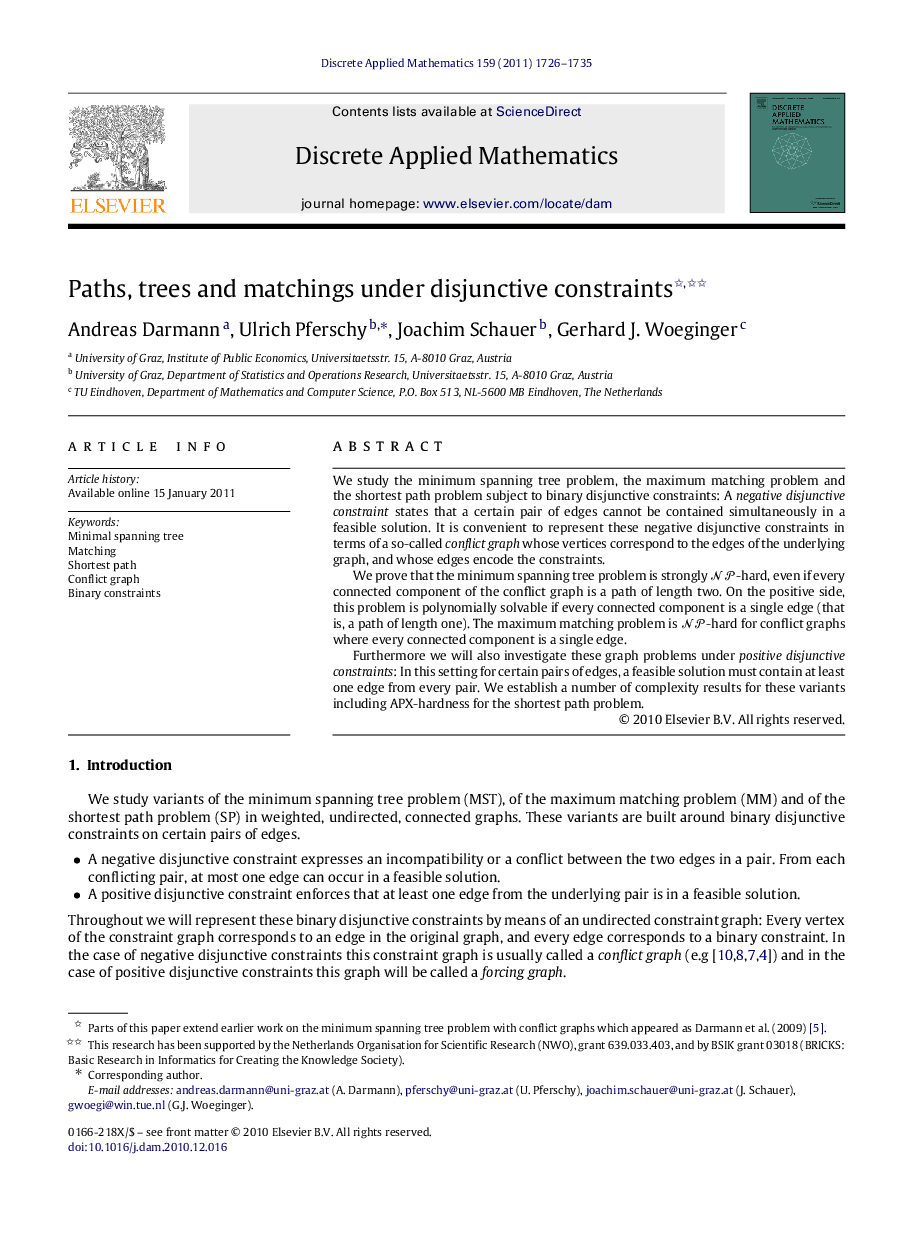| Article ID | Journal | Published Year | Pages | File Type |
|---|---|---|---|---|
| 419852 | Discrete Applied Mathematics | 2011 | 10 Pages |
We study the minimum spanning tree problem, the maximum matching problem and the shortest path problem subject to binary disjunctive constraints: A negative disjunctive constraint states that a certain pair of edges cannot be contained simultaneously in a feasible solution. It is convenient to represent these negative disjunctive constraints in terms of a so-called conflict graph whose vertices correspond to the edges of the underlying graph, and whose edges encode the constraints.We prove that the minimum spanning tree problem is strongly NPNP-hard, even if every connected component of the conflict graph is a path of length two. On the positive side, this problem is polynomially solvable if every connected component is a single edge (that is, a path of length one). The maximum matching problem is NPNP-hard for conflict graphs where every connected component is a single edge.Furthermore we will also investigate these graph problems under positive disjunctive constraints: In this setting for certain pairs of edges, a feasible solution must contain at least one edge from every pair. We establish a number of complexity results for these variants including APX-hardness for the shortest path problem.
